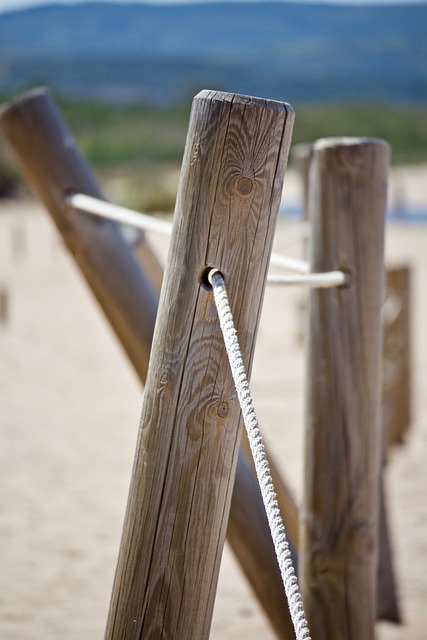In New Bedford, maintaining a privacy fence is not just about aesthetics; it offers homeowners security, privacy, and an enjoyable outdoor space. This comprehensive guide caters to all New Bedford residents looking to keep their fences in top condition. From understanding the purpose of these fences to practical tips on cleaning, repairing, and enhancing their longevity through staining and sealing, we cover everything needed for optimal fence care. Additionally, we’ll touch on electrical safety precautions and local regulations to ensure your privacy fence is both secure and compliant.
- Understanding Privacy Fences: Purpose and Benefits
- Regular Cleaning and Inspection: Keeping Your Fence Pristine
- Repairing Damage: Quick Fixes and Long-Term Solutions
- Staining and Sealing: Protecting Wood and Metal Fences
- Electrical Safety: Avoiding Hazards Near Fences
- Local Regulations: Permits and Compliance for New Bedford Homes
Understanding Privacy Fences: Purpose and Benefits
Privacy fences serve a dual purpose for New Bedford homeowners—they provide a sense of seclusion and security while enhancing the overall aesthetics of one’s property. These structures are designed to block unwanted views, ensuring that residents can enjoy their outdoor spaces privately. Beyond offering comfort, privacy fences have practical benefits too; they can deter intruders, protect against wildlife, and create a buffer zone for pets and children to play safely.
For homeowners looking to maintain the integrity and appeal of their privacy fences, regular upkeep is key. This includes cleaning the fence to remove dirt and debris, inspecting it for any signs of damage or rot, and applying protective coatings or treatments as needed. Such care ensures not only the longevity of the fence but also its ability to continue serving its intended purposes effectively.
Regular Cleaning and Inspection: Keeping Your Fence Pristine
Regular cleaning and inspection are essential to maintain the pristine condition of your privacy fence. Start by sweeping or vacuuming the fence regularly to remove any loose debris, leaves, or twigs that can accumulate over time. Use a soft-bristled brush for wooden fences to prevent damaging the surface. For metal fences, opt for a gentle cleaning solution and a sponge or cloth to avoid scratches.
Inspecting your fence at least once a month is crucial. Look for any signs of damage, rot, or wear and tear, especially in areas exposed to weather elements. Address small issues promptly to prevent them from escalating. Keep an eye out for loose posts, swaying panels, or any structural abnormalities that might compromise the fence’s integrity and your privacy.
Repairing Damage: Quick Fixes and Long-Term Solutions
Repairing damage on your privacy fence is crucial for maintaining its functionality and aesthetic appeal. Quick fixes are often necessary when dealing with minor issues like split boards, bent posts, or broken slats. These can be addressed by using suitable repair kits that include screws, bolts, and glue designed specifically for wood fencing. For more severe damage, long-term solutions might involve replacing entire sections of the fence. It’s recommended to have spare parts or a stash of identical panels to ensure a seamless fit during replacement.
Regular inspection is key in identifying potential problems early on. Look out for signs of rot, mold, or pest infestation that can weaken structural components. Addressing these issues promptly will prevent further damage and save you from costly repairs down the line. Additionally, keeping up with routine maintenance like cleaning, painting, and sealing will significantly extend the life of your privacy fence.
Staining and Sealing: Protecting Wood and Metal Fences
Regular staining and sealing are essential for maintaining the integrity of your New Bedford fence, especially if it’s made of wood or metal. Wood fences, over time, can become susceptible to rot, mold, and insect infestation due to exposure to moisture and elements. Applying a high-quality outdoor stain every 1-2 years will protect the wood, enhance its natural beauty, and extend its lifespan. Choose a stain that offers UV protection to guard against fading and cracking.
Metal fences, while durable, can still corrode and rust if not properly maintained. A good seal can prevent this from happening. Use a high-performance waterproof sealer designed for metal surfaces to create a protective barrier. This simple step will ensure your fence remains sturdy and aesthetically pleasing for years to come.
Electrical Safety: Avoiding Hazards Near Fences
When maintaining a privacy fence, it’s crucial to prioritize electrical safety to avoid hazards. Be mindful of power lines and other electrical installations in your yard or neighborhood. Never attempt to trim tree branches or cut any objects that might come into contact with overhead wires. Keep a safe distance and consider professional assistance if the fence or trees are close to electrical components.
Additionally, inspect the fence for any exposed wiring or damaged cables. If you notice anything suspicious, immediately report it to the relevant utility company. Regularly check for loose connections or frayed wires, especially after storms or strong winds, as these could pose a serious risk of electrocution or fire.
Local Regulations: Permits and Compliance for New Bedford Homes
Before installing or maintaining a privacy fence, New Bedford homeowners must familiarize themselves with local regulations regarding permits and compliance. The city of New Bedford has specific guidelines to ensure that fences meet safety standards and do not encroach on public spaces or neighbors’ property lines. It’s essential to check with the local building department for an up-to-date list of requirements, which may include obtaining a permit and adhering to specific dimensions and materials.
Compliance with these regulations is crucial to avoid legal issues and potential fines. Homeowners should ensure their fence designs do not obstruct sightlines or pose safety hazards. Additionally, they must consider the location of utility lines and other infrastructure before breaking ground, as any disruptions may require coordination with local service providers.
